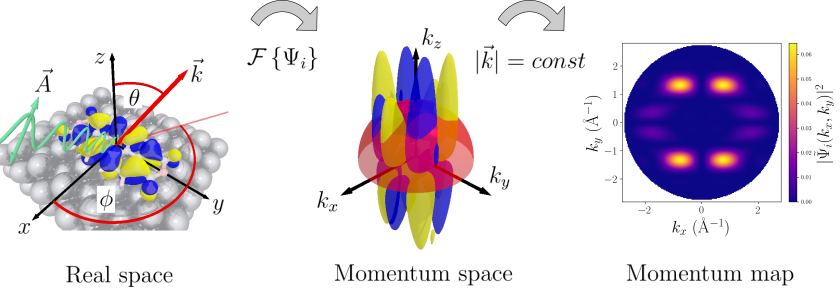Photoemission orbital tomography
In physics and chemistry, photoemission orbital tomography (POT; sometimes called photoemission tomography) is a combined experimental / theoretical approach which reveals information about the spatial distribution of individual molecular orbitals. Experimentally, it uses angle-resolved photoemission spectroscopy (ARPES) to obtain constant binding energy photoemission angular distribution maps, so-called tomograms (also known as momentum maps or k-maps), to reveal information about the electron probability distribution in molecular orbitals. Theoretically, one rationalizes these tomograms as hemispherical cuts through the molecular orbital in momentum space. This interpretation relies on the assumption of a plane wave final state, i.e., the idea that the outgoing electron can be treated as a free electron, which can be further exploited to reconstruct real-space images of molecular orbitals on a sub-Ångström length scale in two or three dimensions. Presently, POT has been applied to various organic molecules forming well-oriented monolayers on single crystal surfaces or to two-dimensional materials.
Image from: Wikipedia
This approach has been first developed by Peter Puschnig, Mike Ramsey and Georg Koller from the University of Graz and soon joined by the group of Stefan Tautz from the Forschungszentrum Jülich to explore the strengths and limits of the method. This collaboration laid the foundation of a D-A-CH project (funded by the DFG and FWF from 2018 to 2022), together with Mathias Richter from the Metrology Light Source synchrotron.
Simulated gas-phase molecular orbitals in real space as well as in reciprocal space can be found in our Molecular Orbital Database.
A further development of POT in the time domain is the object of a new collaboration and a dedicated project, see: orbital-cinema.eu.





